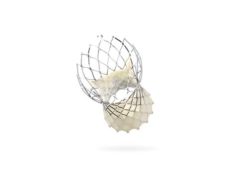
Medtronic has launched the DxTerity diagnostic angiography catheter line, and several transradial-specific products including the DxTerity TRA, InTRAkit access kit and TRAcelet compression device, all of which have received FDA (Food and Drug Administration) clearance and the CE mark for use in diagnostic cardiac catheterisation procedures and percutaneous coronary intervention (PCI).
The DxTerity and DxTerity TRA diagnostic catheters are used to determine whether or not revascularisation is necessary in patients with coronary artery disease; the DxTerity TRA diagnostic catheters are designed for transradial access and are intended to allow for engagement of both coronary arteries without catheter exchange. The InTRAkit access kit is designed to enhance the transradial experience by providing several component pieces-ergonomic needles that offer good flashback visualisation, atraumatic mini-guidewires, as well as tapered introducer sheaths that provide kink resistance and enhanced lubricity for easy insertion. The TRAcelet compression device is designed to simplify pressure reduction post-transradial catheterisation by facilitating access site patent haemostasis.
“The global approval of the DxTerity Diagnostic Catheters, as well as the introduction of the new Medtronic suite of transradial products represents a significant step forward for patients requiring PCI procedures,” says Sunil Rao, interventional cardiologist and associate professor of medicine at Duke University, in Durham, USA. “It is increasingly important to have a full suite of products accompanied by robust training to increase physician utilisation, improve patient comfort and enable same-day discharge.”
In the USA, Medtronic also launched the Transradial Arc Curriculum, a fully-customisable education and training solution for physicians, staff and administrators to ensure successful adoption of the transradial approach from access to patent haemostasis. The curriculum aims to provide robust clinical training and enhance patient care pathways through a hospital-specific approach to help institutions optimise the delivery of transradial care.
A meta-analysis of randomised studies that studied the transradial approach generally have found that procedures via the transradial approach have been associated with cost savings, reduced mortality and improved safety with reductions in major bleeding and vascular complications.










